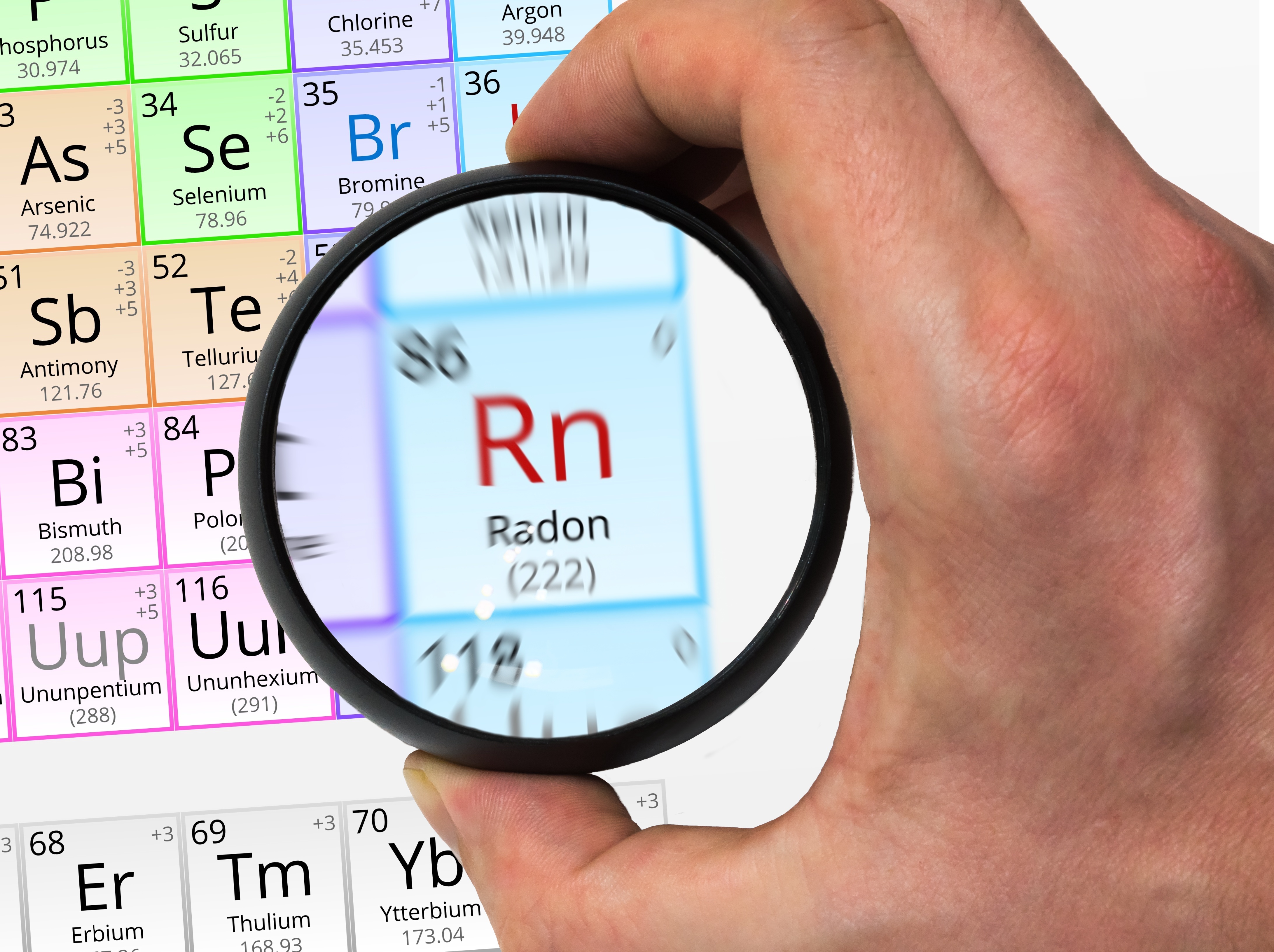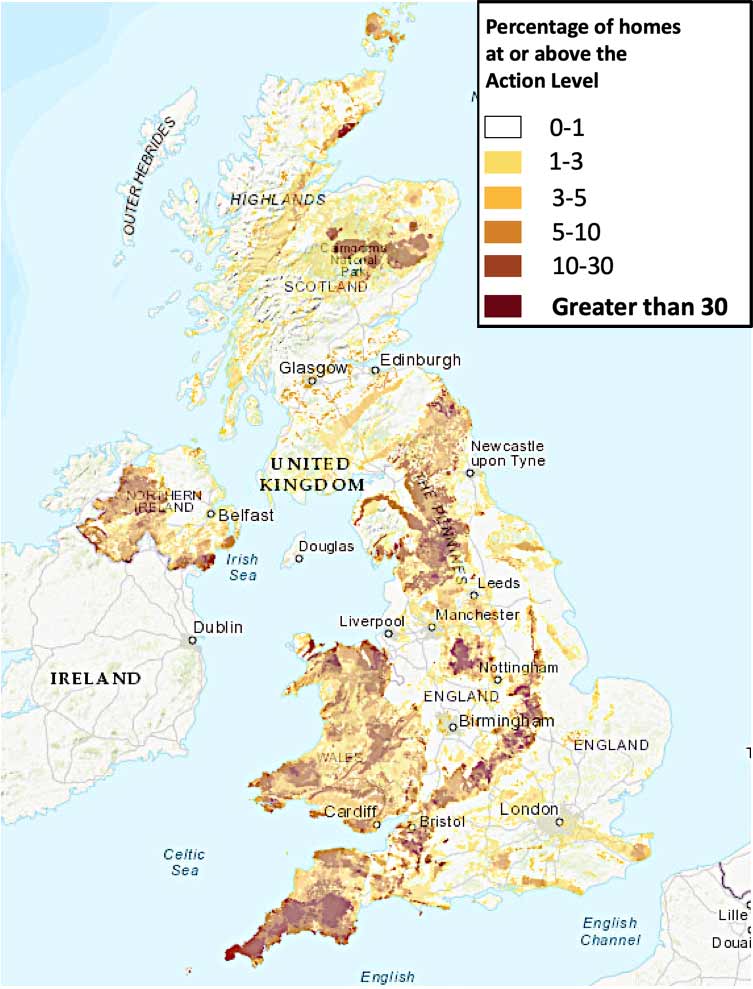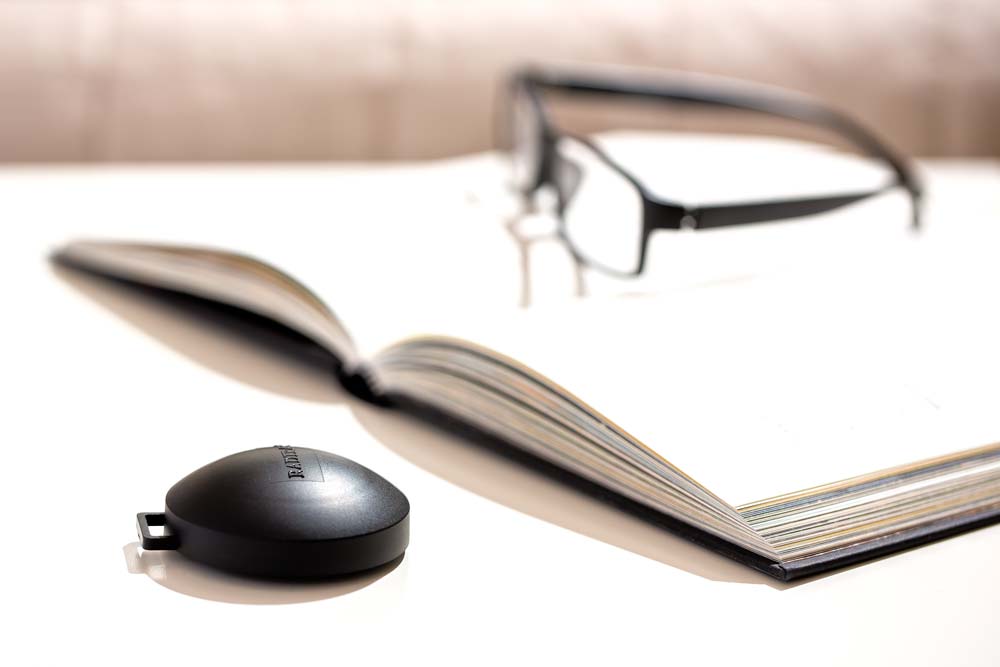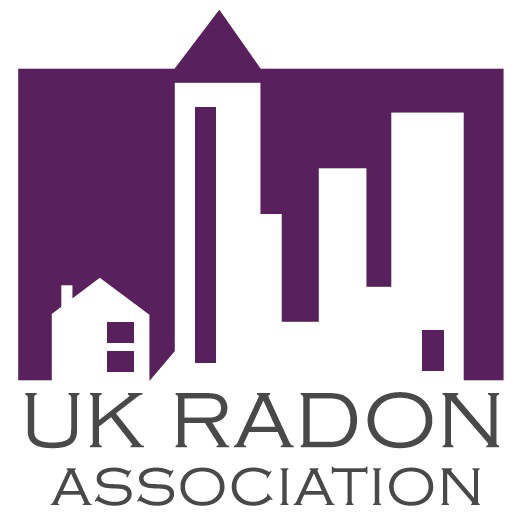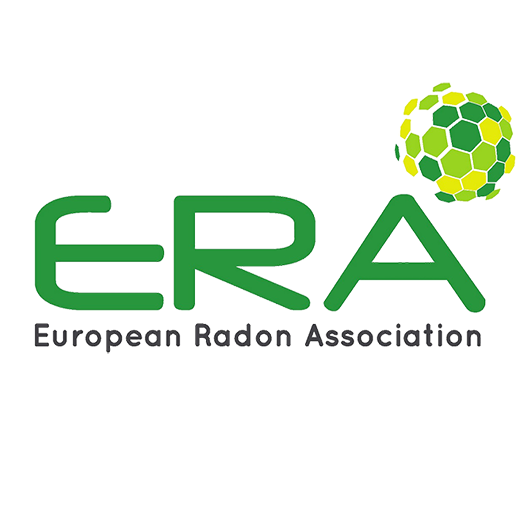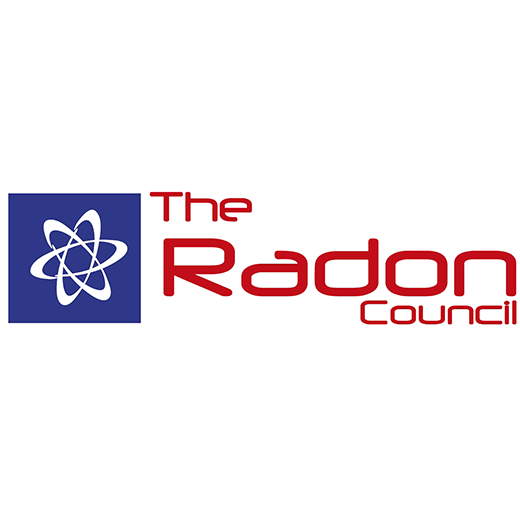What is radon ? All you need to know about radon.
What is radon ?
Radon is a natural radioactive gas that is colorless and odorless. It comes naturally from the soil because it is formed from the radium present in the rocks of the subsoil. Radium and radon are both included in the radioactive decay chain of uranium.
Not enough people are aware of the health risks that prolonged exposure to radon can lead to. Radon in indoor air is a major public health issue in many countries, including the UK.
Radon in the UK is usually known as an “only-Cornwall” issue and is not high on the agenda of the UK media.
Even if regulation exists to measure for radon in workplaces, measuring radon in homes is still not mandatory, but remember most people spend the majority of their time at home.

